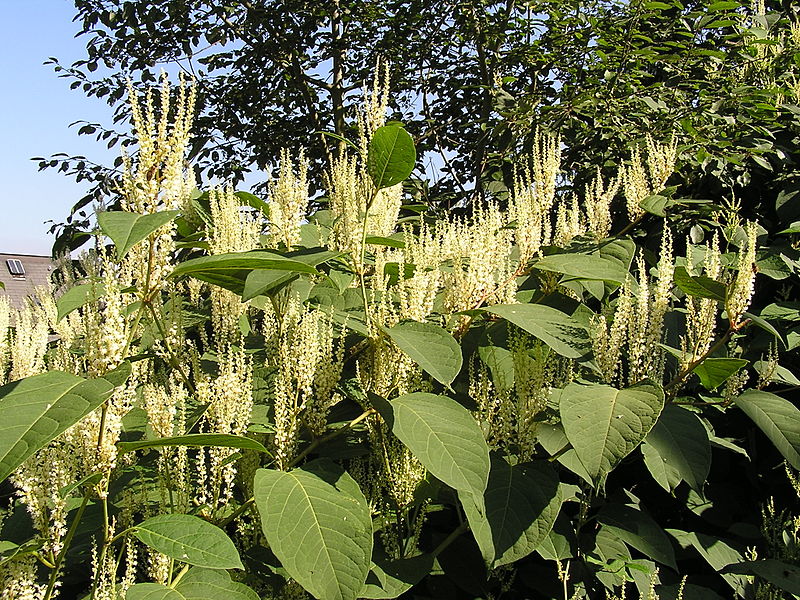Alien Hikers - Planet Earth Online
Interview with
Dave - Alien, or non-native species, can have serious effects on the landscape and indigenous wildlife. Recent research in Australia has found that hikers could be partly to blame...During just one season in a national park there, hikers were found to carry up to two million plant seeds just on their socks!
James Bullock, from Wallingford's Centre for Ecology and Hydrology, was one of the authors of the study, which was based on some of his earlier work in Dorset, Planet Earth podcast presenter Sue Nelson joined him at a picturesque section of the River Thames in Oxfordshire to see what they could find....
James - Riverbanks are actually one of the most invaded habitats we have in Britain, so the sort of species you might see along here are Himalayan Balsam or Japanese Knot Weed, all of which cause problems with riverbank stability affecting native biodiversity. What you will see also this time of year is the chestnut leaf miner, a lot of chestnut trees their leaves will be removed by mining of this moth caterpillar. Actually, we can see over here, just next to us, are Canada geese which have been established in this country for a long time and cause a lot of problems, not just affecting native bird species but by pooing in waterways cause a fertilisation effect which can effect what's growing in the water as well.
Sue - So the effects then of invasive species are quite wide and varied, it's not just a threat to biodiversity in some cases?
James - No, they have quite a wide range of effects. They can effect biodiversity directly, but they can also affect aspects of the natural world which are of more direct impact on humans, such as bank erosion, pollution of waterways, causing problems with grazing lands, so you have invasive species spreading across grazing areas which affects the ability of animals to graze on them.
Sue - Now the Australian study found that different parts of a hiker's clothing could spread different numbers and types of seeds.
James - There are some seeds which have hairs or bristles on them which are probably evolved to allow their dispersal by animals; we come along with our socks or our trousers, almost like an animal skin and it forms a nice material for these seeds to attach to. So, the more woolly the clothing you're wearing and the more bristly the seed the more seeds will get dispersed by people.
Sue - How did this come out of research from Dorset?
James - We were interested in quite a different aspect of dispersal in Dorset. We were working on a species called Wild Cabbage there, which is quite a rare species restricted to our coastline and it forms quite discreet populations along the coastline which have been sitting there for probably hundreds of years. So, we were interested in the reverse side of the question - what limits this species to grow where it grows and what are the possibilities for its dispersal?
Along the coastline of Britain we have loads and loads of footpaths and one possibility we thought of was that hikers could take the seeds of the cabbage around. So we did an experiment where we found that seeds rather than socks or trousers would stick into the mud on hikers boots and could be transported very long distances, the natural dispersal by wind could take seeds a maximum of about 200 metres, but hikers could take the seeds over five kilometres.
Sue - Is that why you want to know? Is that why you do this sort of research in order to predict possibly, or can you even predict when you've got millions of seeds capable of sticking to somebody's hiking socks what species are going to be transported where?
James - Yes. The prediction is the key here. What we want to understand for alien species or non-native species is what species is transported, how far they're transported and what are the mechanisms of their transportation. And the reason we do that is not simply understanding, but then we can use this sort of information in models of spread of these species to work out how we might limit that spread, so a lot of work on alien species so far has been saying, ok, we find out where the populations are growing and we go and try and kill them in some way.
A much more efficient and effective method would be to prevent the movement of these species in the first place and so that's what we're working towards - understanding the whole process of spread so we can look at the crunch points and limit that spread by especially targeting dispersal.
Sue - How would you advise hikers, how on earth are they going to limit the spread of seeds?
James - Yes, that is a big question and it could sound a bit over the top telling people to be very careful about what they're transporting. But certainly in the study in Australia, this is a highly protected area which is under threat from these European plant species coming in, so in that case, the recommendation has been to put signs up for walkers, to educate walkers, to say before you walk into these remote areas just clean your trousers and socks off, just pick the seeds off before you spread them into these pristine areas. So, I think in very specific circumstances, where we're trying to protect particular areas, there is something that can be done.
- Previous The Safety of Statins
- Next Imaging with heat









Comments
Add a comment